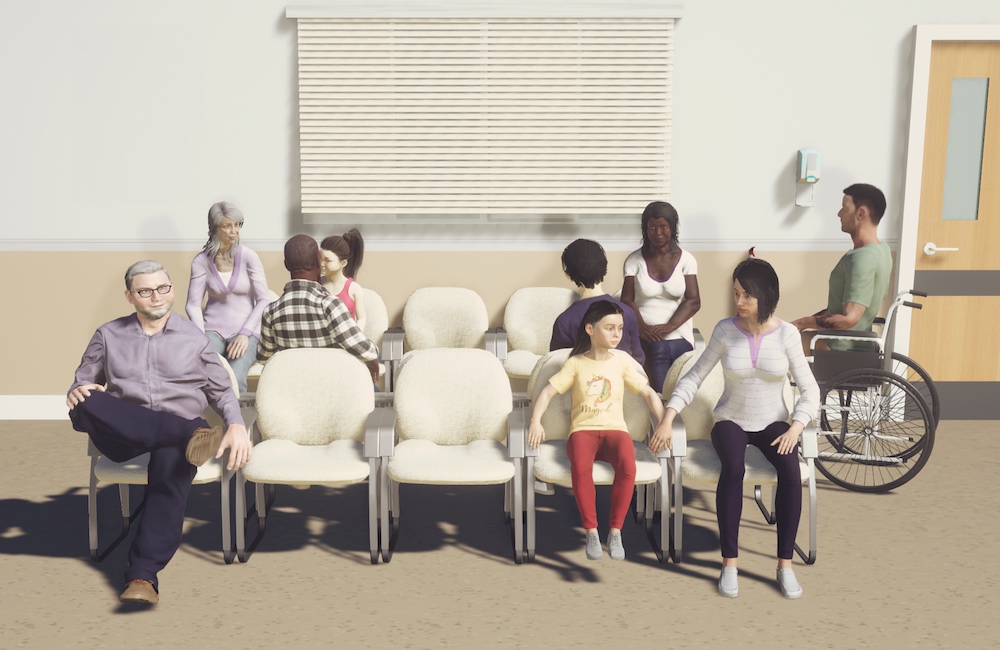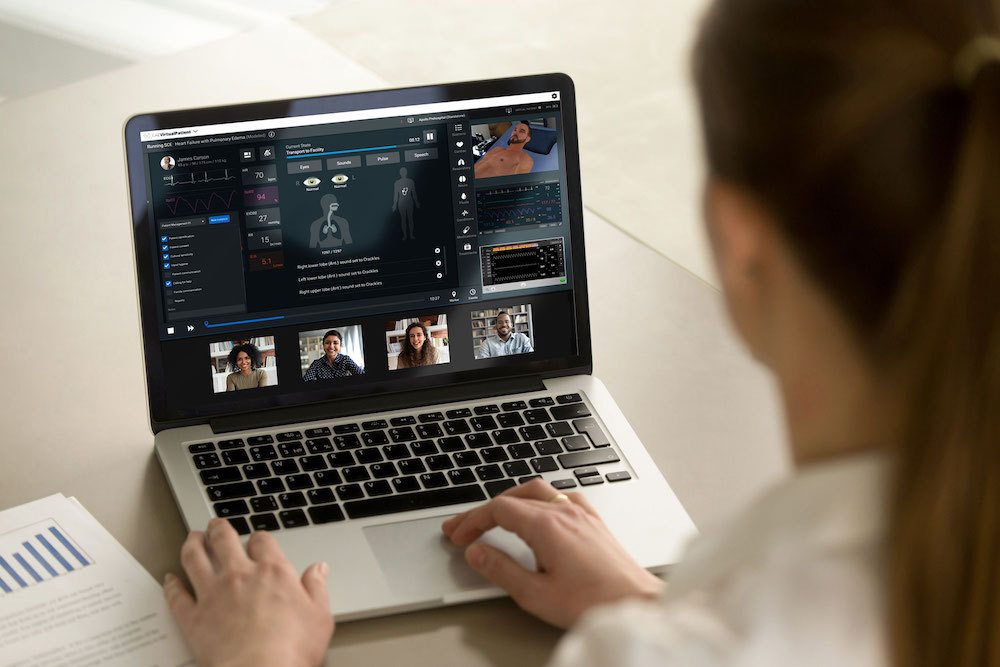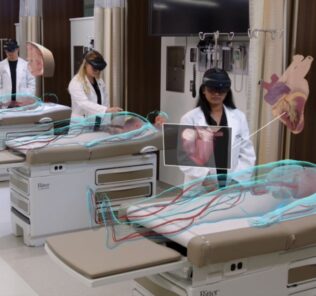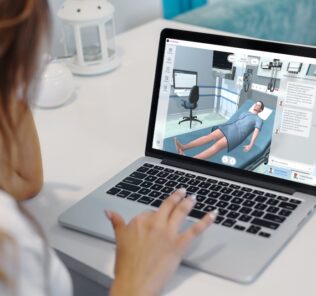MD Shares Views on Strongest Digital Patients Available from the Healthcare Simulation Market | 2021 Edition
COVID-19 distancing measures pushed the digital and virtual patient experience into the spotlight as a preferred teaching platform over the past year, which will have a positive lasting impact for the medical simulation industry. Navigating the various offerings without a hands-on event such as the International Meeting for Simulation in Healthcare (IMSH) prompts a platform seeker to pore over the wide range of publicly available information. The choice of product really depends on the specific needs of learners and the institution’s desired targets of didactic focus. As such, HealthySimulation.com reader Andrew Bazakis, MD, FACEP, FAAEM, an emergency medicine physician in Saginaw, Michigan, and the co-director of the Emergency Medicine Simulation curriculum at Central Michigan University, shared this article after reviewing some of the available tools based on publicly available information. Bazakis’ article includes a look at PCS Spark, Oxford Medical Simulation, CAE Maestro, and presents a short list of top picks denoted by areas of strength:
Optimal for Learning Experiences: PCS Spark
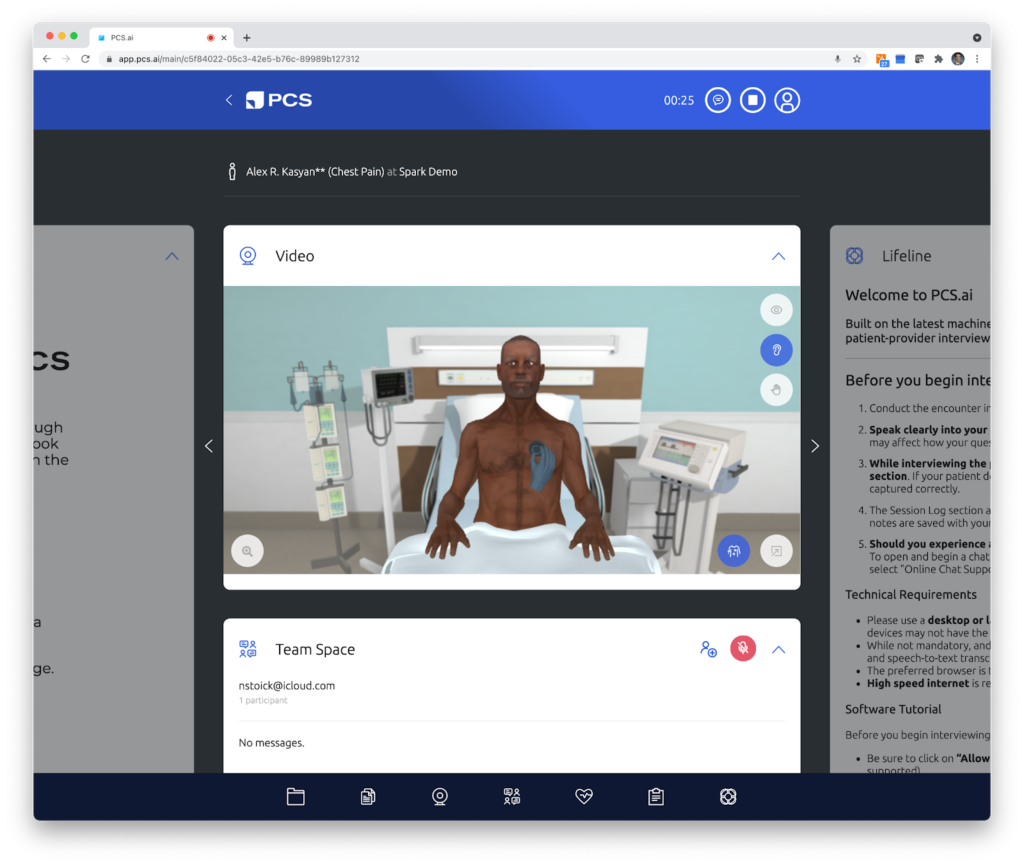
Sponsored Content:
PCS (Patient Communication Simulators) provides an immersive learning experience, supported both on-screen and 360 immersive VR with headset, fostering both communication and physical health assessment. Numerous cases are available both individually and in bundles with the further option for subscribers to customize cases to suit their particular needs. Learners have access to a realistic, animated and interactive patient avatar who can understand spoken language, provide a history, and allow for an interactive physical examination, with findings that change according to chosen interventions.
Physical exam maneuvers are performed manually with a mouse in a point-and-click style that then reveals auscultated sounds according to where the stethoscope is placed, as well as images of oral pharyngeal cavities, tympanic membrane, etc. Telemetry-style vital signs monitoring is routinely available in real time, as is access to patients’ medical record information, immediate lab test results as well as high-resolution diagnostic images. In case learners are stuck, they can access “lifelines” during sessions revealing relevant case guidelines to promote success in case completion. Users can also participate in a ‘multiplayer’ mode by inviting their peers to their session.
Pros:
- Natural conversation with spoken speech detection.
- Telemetry-style monitoring allowing learner detection of arrhythmia in real time.
- Assessment of communication as well as manual physical exam skills of the learner.
- Custom scenario creation.
- Post-scenario assessment reports.
And for the cons…
Sponsored Content:
Cons:
- Limited number of bundled scenarios.
Optimal for Technical Skills Assessment: Oxford Medical Simulation
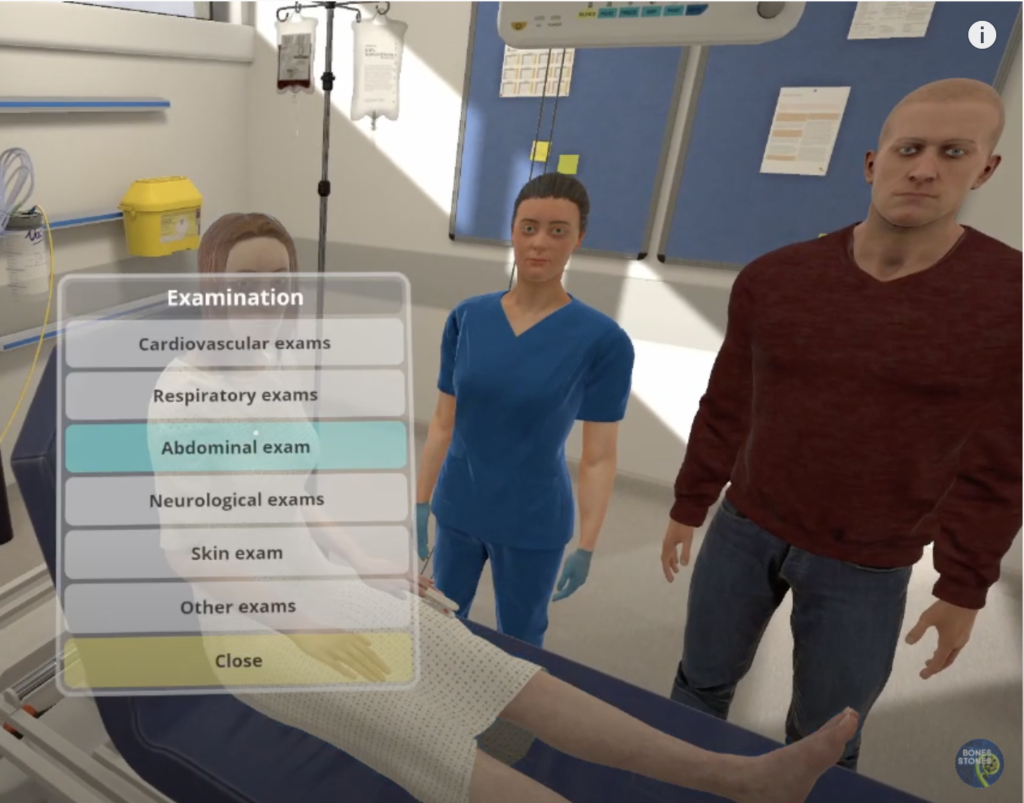
OMS exposes learners to the workflow and processes behind healthcare delivery. Advanced learners can showcase their technical knowledge through menu driven interaction and post-scenario multiple choice questions. Patient interview is performed with choosing from a point and click menu of topics of historical inquiry. The avatar speech in response is fluid and realistic given complex responses, including some social subtleties such as nervousness or worry or even attempting to dismiss the concerns of the bedside family member, lending a further degree of realism to the scenario.
Patient interventions such as exams, are also performed with a translucent pick-and-click menu that tends to occupy the middle of the screen, which can obstruct the view. Vital signs and patient states quickly and appropriately respond to performed interventions which are represented rather faithfully in visual form. Once chosen, “ghost hands” perform procedures and examine movers in an automated fashion.
This platform offers single and multi-player options and detailed analytics on performance, with the added benefit of being able to call consultants and have a recorded message play as if it was a live consultant giving advice over the phone. Some physical exam findings are described verbally by an unseen third party and others are demonstrated, with some findings manifesting both features.
One of the platform’s strongest features is the standardized reflection prompts at the end of the scenario, designed to maximize learning experience through reflection.
Pros:
- Visually realistic, can look around the room 360°; animated avatars and environments.
- Two-part guided reflection for learners.
- Learners received an extensive summary report post-scenario.
Cons:
- Point-and-click menu automated communication and exam.
- Localized to British language, medication, measurement units and standards of care.
- Heart rate displayed on monitor without a telemetry waveform.
Now what about Shadow Health vs CAE Maestro Evolve – Instructor-Led Experience
Optimal for Real-Time, Faculty Driven Teaching: CAE Maestro Evolve – Instructor-Led Experience
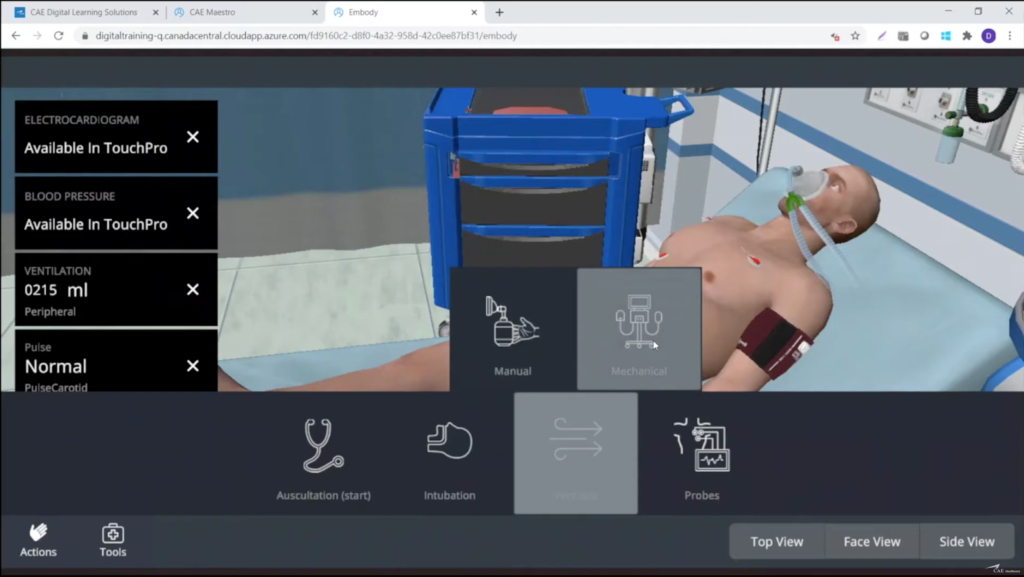
While many digital patient platforms are designed for self-guided or autonomous interaction, this distance learning experience is started and driven in real-time by faculty members at the helm. While the avatars are of limited but not unreasonable visual fidelity, the radiographic images provided appear to be very high resolution. Learners have access to telemetry-style monitoring of patient vital signs as well as numerous virtual tools including AEDs and ventilators.
The platform offers modeling of complex physiological states as well as customization of patient details including age, gender, height, and weight. Faculty can offer pre-created scenarios or create real-time changes in patient states as the simulation scenario is experienced by the learner much like a live manikin simulation. The product does market itself as a physiology simulator, not a communication simulator and as such, does not include a conversation engine.
Pros:
- Complex physiology modeling.
- Customization of digital patient physical details.
- Pre-created Simulated Clinical Experiences (SCEs) available.
- Faculty option for simulation detail changes on the fly.
Cons:
- No conversation engine.
- The customized digital patient can be a less detailed and realistic patient.
Optimal for Nursing Transition to Practice: Shadow Health
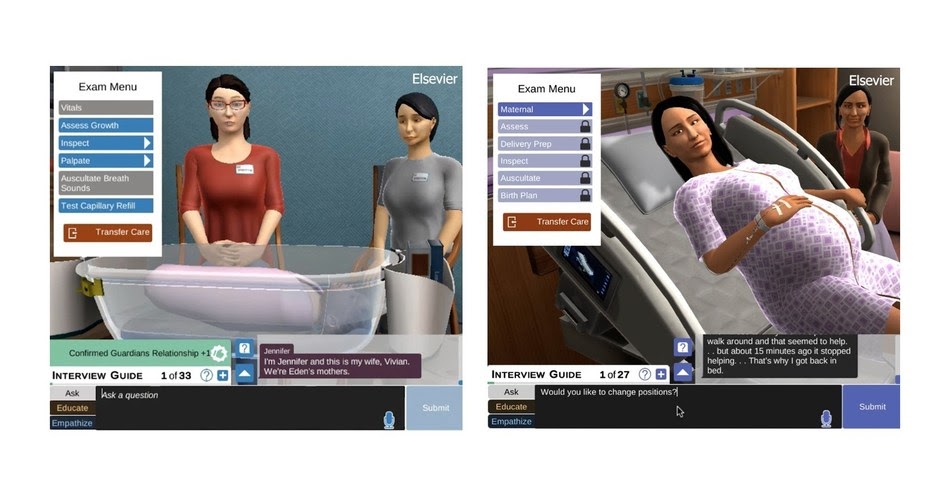
Acquired in December 2020 by Elsevier, this platform includes the widest range of avatars and scenarios for nursing. The avatars are animated and realistic. The conversation engine allows either free text typing or speech recognition transcribing of learner questions with realistic auditory avatar responses that mimic real conversation. These patient responses are also transcribed at the bottom of the screen in closed caption format.
Pros:
- Self-guided learning.
- Breadth of content.
- In-app, in-scenario Electronic Healthcare Records (EHR) training.
Cons:
- A busier, older user interface.
- Nursing procedure orientated.
- Less emphasis on critical thinking.
The Take-Away
Dr. Bazakis shared his final opinions:
In education and academia, there is not necessarily a one-size-fits-all offering, as product choice depends much on the specific needs of end users and programs alike. We wouldn’t necessarily use a manikin for IV practice, a task trainer for code training, or practice CPR on a digital patient. Rather, we would pick the optimal tool for the job at hand.
Healthcare simulation programs are recommended to first conduct a needs assessment to identify objectives before virtual patient shopping. They can then consider the various approaches each company takes toward meeting the needs of simulationists and clinical simulation programs in an ever-changing technology landscape.
Download an Executive Summary Comparison Chart of these
Virtual Patient Platforms, a Document Compiled by PCS
Disclaimer: Dr. Bazakis serves as a board member on the Clinical Advisory Board of PCS. Product information and data was gathered online through publicly available information in June 2021. All views expressed are the author’s own and do not represent the opinions of any entity whatsoever with which the author has been, is now, or will be affiliated with in the future. All product names, logos, images, brands, trademarks, and registered trademarks are the property of their respective owners. All company, product and service names used in this website are for identification purposes only. Use of these names, images, trademarks, and brands does not imply endorsement.
The author would like to offer special thanks to YouTube’s “Stones and Bones” for his review of the Oxford Medical Simulation platform. He can be found here.
Editor’s Note: Other digital patient platforms not mentioned in this article include UbiSim, Sim-X, Shadow Patients, i-Human Patients, NEJM Healer, SimPHARM, and VRpatients, to name a few!
Andrew M. Bazakis, MD, FACEP, FAAEM, an emergency medicine physician in Saginaw, Michigan, and the Co-Director of the Emergency Medicine Simulation Curriculum at Central Michigan University
Sponsored Content:



